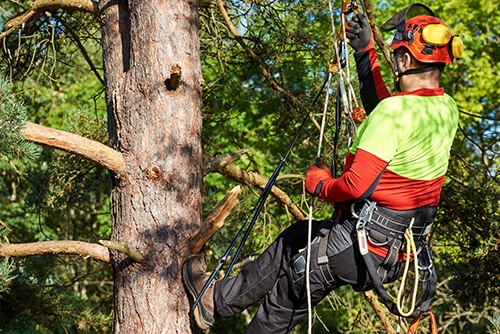A. Understanding the Practice of Tree Lopping
Tree lopping, a common term in arboriculture, involves cutting off branches and limbs from a tree. It is a practice often used for various purposes, but it comes with a fair share of controversy and concerns to get tree removal.
B. The Controversy Surrounding Tree Lopping
While tree lopping can be a necessary tree management technique, it has sparked controversy due to its potential negative impacts on tree health and the environment.
C. The Importance of Responsible Tree Management
Responsible tree management is essential to maintain the health and beauty of our trees while preserving the ecological balance of our surroundings.
II. The Art of Tree Lopping
A. Pruning vs. Lopping: Key Differences
1. Precision Pruning
Precision pruning involves the careful removal of specific branches to enhance the tree’s structure and health.
2. The Extent of Lopping
Tree lopping, on the other hand, often entails more extensive cutting, which can be perceived as a drastic measure.
B. When Tree Lopping Is Justified
1. Hazardous Branches
Tree lopping may be justified when dealing with hazardous branches that pose a risk to people or property.
2. Encouraging New Growth
In some cases, lopping is used to stimulate new growth and rejuvenate a tree.
C. The Role of Arborists in Tree Lopping
Certified arborists play a vital role in determining when and how tree lopping should be carried out, ensuring it aligns with the tree’s needs.
III. The Controversy and Concerns
A. Negative Impacts of Improper Lopping
1. Tree Stress and Health Issues
Improper lopping can lead to tree stress, making them susceptible to diseases and insect infestations.
2. Aesthetics and Property Value
Lopped trees often lose their natural form, impacting the overall aesthetics of a landscape and potentially lowering property values.
B. Legal and Environmental Considerations
1. Local Regulations
Many regions have strict regulations on tree lopping to protect their natural environments.
2. Ecological Consequences
Lopping can have ecological consequences, affecting wildlife that relies on trees for habitat and food.
C. Responsible Lopping Practices
1. The Need for a Certified Arborist
Hiring a certified arborist is essential to ensure that tree lopping is carried out responsibly and in compliance with local regulations.
2. Sustainable Tree Care
Practicing responsible tree care includes taking measures to minimize environmental impacts while maintaining tree health.
IV. The Importance of Responsible Tree Management
A. Long-Term Tree Health
1. Preserving Vitality
Responsible tree management helps preserve the vitality and longevity of trees.
2. Minimizing Risks
Proper pruning and lopping can reduce the risk of falling branches and tree failure.
B. Environmental Stewardship
1. Protecting Biodiversity
Maintaining healthy trees contributes to the preservation of biodiversity in urban and natural environments.
2. Maintaining Ecosystem Balance
Trees play a crucial role in maintaining the balance of ecosystems.
C. Promoting Safety and Aesthetics
1. Property Enhancement
Well-maintained trees enhance the aesthetics and value of properties.
2. Community Well-Being
Healthy, well-cared-for trees contribute to the overall well-being of communities.
V. Conclusion
A. Striking the Balance: Responsible Tree Lopping
Balancing the need for tree lopping with responsible practices ensures that our trees can thrive while mitigating potential negative impacts.
B. Ensuring a Healthy and Sustainable Arboriculture
Responsible tree management is crucial for a sustainable and healthy arboriculture industry.
C. Making Informed Choices for Your Trees and Environment
Choosing to lop or prune trees should be based on informed decisions that prioritize both tree health and environmental well-being.
Read more about it:https://greyhoundsverdevalley.com/low-mileage-used-cars/



